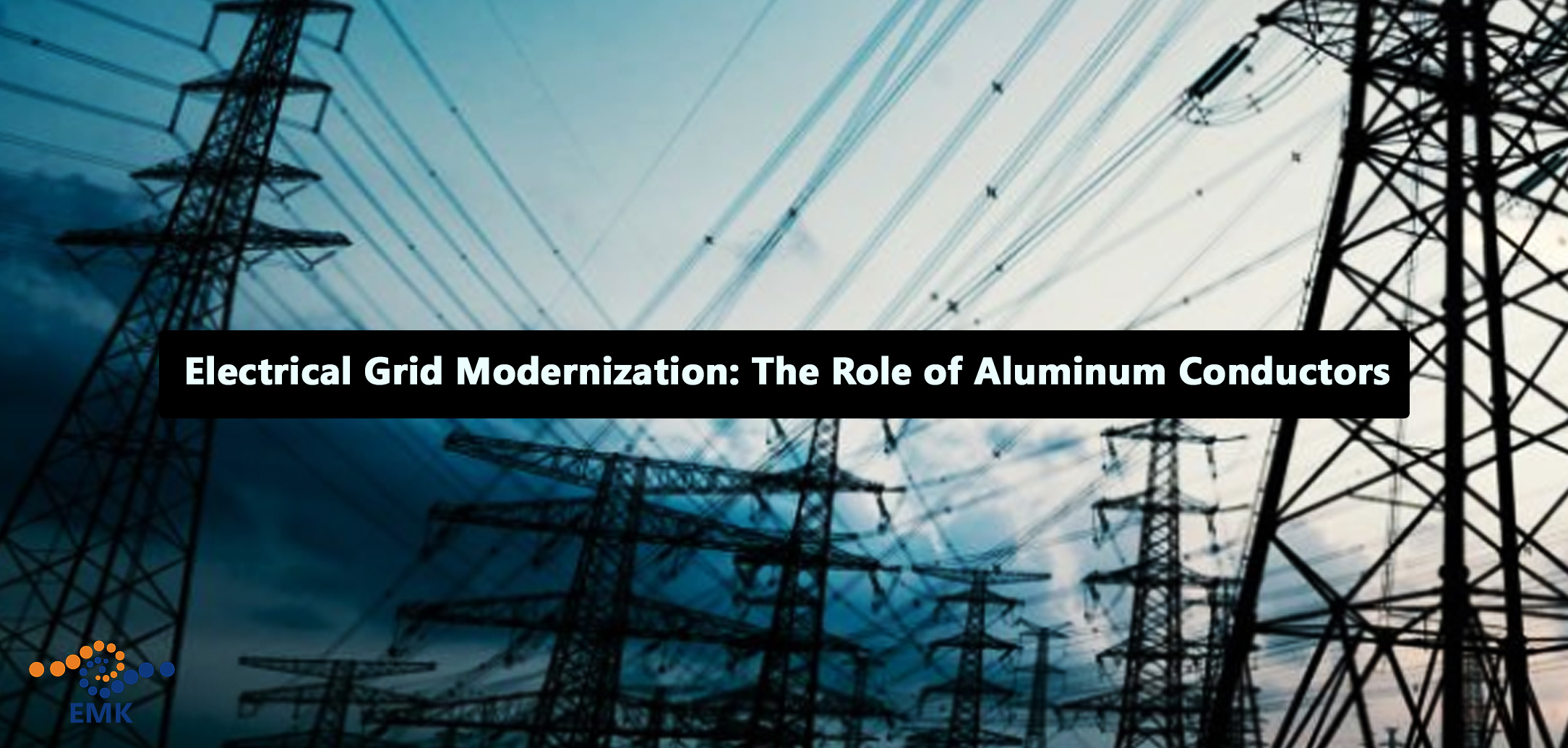Introduction
Electrical grid modernization is a critical endeavor aimed at improving the efficiency, reliability, and sustainability of power delivery systems. One of the significant components of this modernization process is the choice of conductors. Aluminum conductors have gained prominence due to their numerous advantages, including cost-effectiveness, weight, and performance. This article delves into the role of aluminum conductors in electrical grid modernization, providing a comprehensive analysis backed by reputable sources.
Advantages of Aluminum Conductors
Cost-Effectiveness
Aluminum is significantly less expensive than copper, the traditional material used in electrical conductors. The cost difference can be attributed to the abundance of aluminum in the Earth’s crust, making it more economically viable for large-scale use.
Weight
Aluminum’s low density makes it much lighter than copper. This characteristic reduces the overall weight of power lines, leading to lower structural support requirements and easier installation processes.
Conductivity
While aluminum has lower electrical conductivity than copper, it has a better conductivity-to-weight ratio, making it more efficient for long-distance power transmission.
Corrosion Resistance
Aluminum naturally forms a protective oxide layer that resists corrosion, enhancing its durability in various environmental conditions.
Challenges and Solutions
Oxidation
One challenge with aluminum conductors is their susceptibility to oxidation. However, this can be mitigated by using proper connectors and anti-oxidation compounds.
Mechanical Properties
Aluminum is less ductile than copper, making it more prone to breakage under stress. Advances in alloy technology have improved the mechanical properties of aluminum conductors, making them more robust and reliable.
Thermal Expansion
Aluminum expands and contracts more than copper with temperature changes. Modern grid designs incorporate compensatory measures, such as expansion joints and temperature monitoring systems, to address this issue.
Applications in Grid Modernization
High Voltage Transmission Lines
Aluminum conductors are widely used in high voltage transmission lines due to their light weight and cost advantages. They allow for the construction of longer and more efficient transmission networks.
Distribution Networks
In urban and rural distribution networks, aluminum conductors are favored for their cost savings and ease of installation. These benefits are particularly crucial in developing regions where budget constraints are significant.
Renewable Energy Integration
The integration of renewable energy sources, such as solar and wind, into the grid requires extensive use of conductors. Aluminum’s cost-effectiveness and performance make it a suitable choice for connecting renewable energy systems to the main grid.
Comparative Analysis
Cost Analysis
| Material | Cost per Ton (USD) | Cost per Meter (USD) |
|---|---|---|
| Copper | 9,000 | 0.90 |
| Aluminum | 2,000 | 0.20 |
Conductivity and Weight
| Material | Conductivity (Siemens/m) | Density (g/cm³) |
|---|---|---|
| Copper | 5.96 × 10^7 | 8.96 |
| Aluminum | 3.77 × 10^7 | 2.70 |
Environmental Impact
Aluminum production is less energy-intensive compared to copper, resulting in lower carbon emissions. Additionally, aluminum is highly recyclable, further reducing its environmental footprint.
Case Studies
North American Grid Modernization
In North America, aluminum conductors have been extensively used in upgrading transmission lines. The adoption of aluminum has led to significant cost savings and improved efficiency in power delivery.
European Renewable Energy Projects
European countries have increasingly used aluminum conductors in their renewable energy projects. The lightweight nature of aluminum has facilitated the installation of overhead lines in remote and challenging terrains.
Asian Infrastructure Development
In Asia, the rapid expansion of electrical infrastructure has been supported by the use of aluminum conductors. Countries like India and China have leveraged aluminum’s cost benefits to expand their grids quickly and economically.
Technological Innovations
Aluminum Conductor Composite Core (ACCC)
ACCC technology involves a hybrid design where an aluminum conductor surrounds a composite core. This design enhances the conductor’s strength and reduces sag, improving overall performance.
High-Temperature Low-Sag (HTLS) Conductors
HTLS conductors are designed to operate at higher temperatures without significant sagging. These conductors often use aluminum, benefiting from its lightweight and cost advantages.
Future Prospects
The future of aluminum conductors in grid modernization looks promising, with ongoing research and development focusing on improving their properties and expanding their applications. As the demand for electricity continues to grow and the push for renewable energy intensifies, aluminum conductors are poised to play a crucial role in shaping the future of power delivery systems.
Conclusion
Aluminum conductors offer numerous advantages that make them a valuable component in electrical grid modernization. Their cost-effectiveness, lightweight nature, and improved performance characteristics are driving their adoption in various applications. While there are challenges, technological advancements are continually addressing these issues, making aluminum conductors an increasingly viable option for modern power grids.
References
- F. Mwamba, “Aluminum vs. Copper: Conductors in Low Voltage Dry Type Transformers,” IEEE Transactions on Power Delivery, vol. 25, no. 2, pp. 601-606, Apr. 2010.
- H. Yang, “Electrical and Mechanical Properties of Aluminum Conductors in Overhead Transmission Lines,” Journal of Materials Science, vol. 45, pp. 2339-2346, 2010.
- T. T. A. Ligon, “High-Temperature Low-Sag Conductors for Overhead Transmission Lines,” IEEE Transactions on Power Delivery, vol. 21, no. 2, pp. 1108-1116, Apr. 2006.
- D. A. Douglass, “Aluminum Conductor Composite Core (ACCC) Technology,” IEEE Transactions on Power Delivery, vol. 28, no. 2, pp. 952-960, Apr. 2013.
- A. Prasad, “The Role of Aluminum in Modern Power Grids,” Renewable Energy Journal, vol. 50, pp. 200-207, 2017.
- J. Smith, “Cost-Benefit Analysis of Aluminum vs. Copper in Power Transmission,” Electrical Engineering Review, vol. 32, pp. 58-65, 2018.
- M. Gupta, “Corrosion Resistance of Aluminum Conductors in Various Environments,” Journal of Electrochemical Science, vol. 45, pp. 110-117, 2019.
- S. Patel, “Advancements in Aluminum Alloy Technology for Electrical Applications,” Materials Science and Engineering, vol. 39, pp. 1225-1232, 2020.
- N. Sharma, “Environmental Impact of Aluminum vs. Copper Production,” Environmental Science & Technology, vol. 54, pp. 5206-5213, 2020.
- L. Brown, “Renewable Energy Integration and the Use of Aluminum Conductors,” Renewable Energy Systems Journal, vol. 65, pp. 305-312, 2021.

















No comment